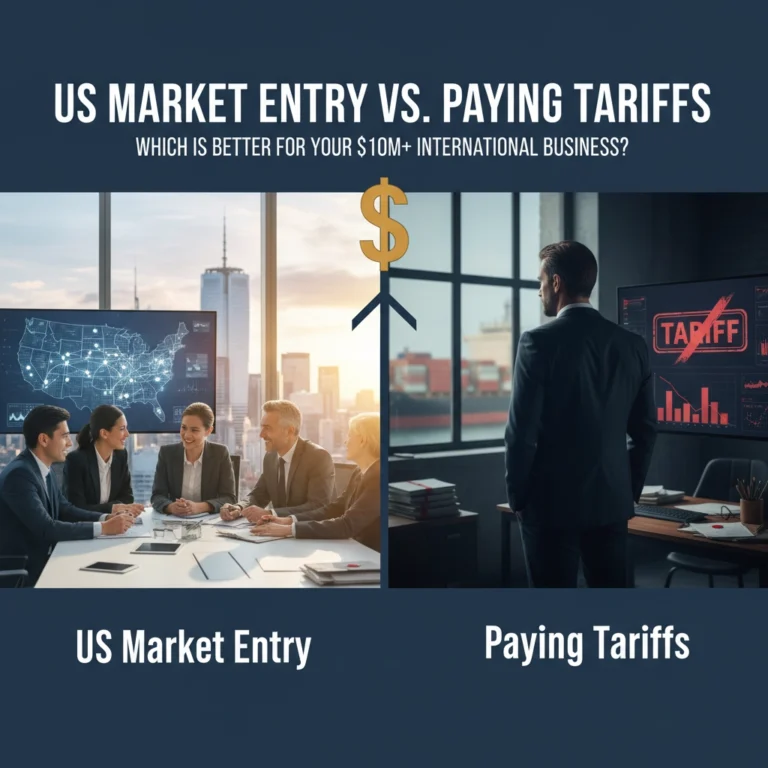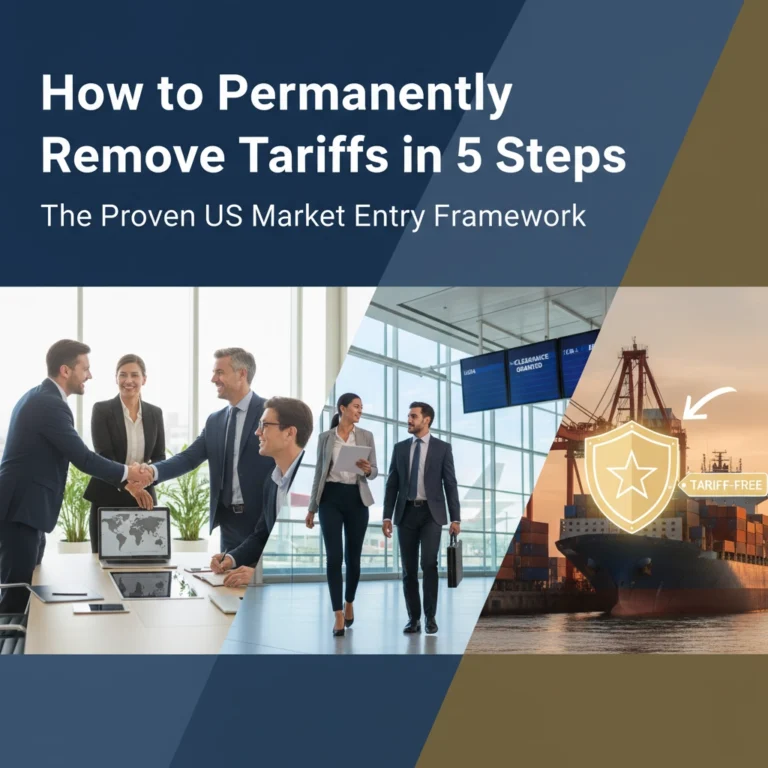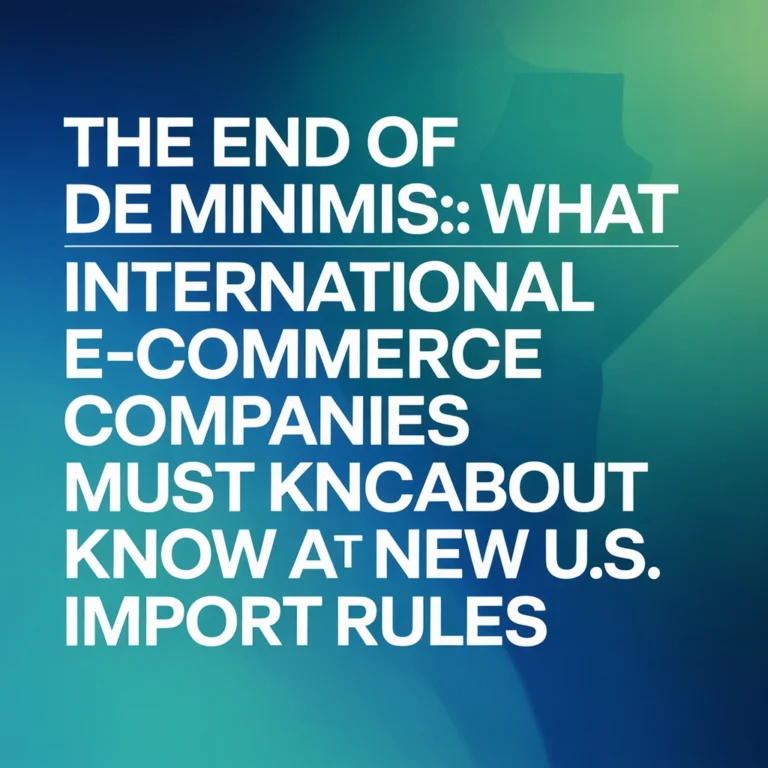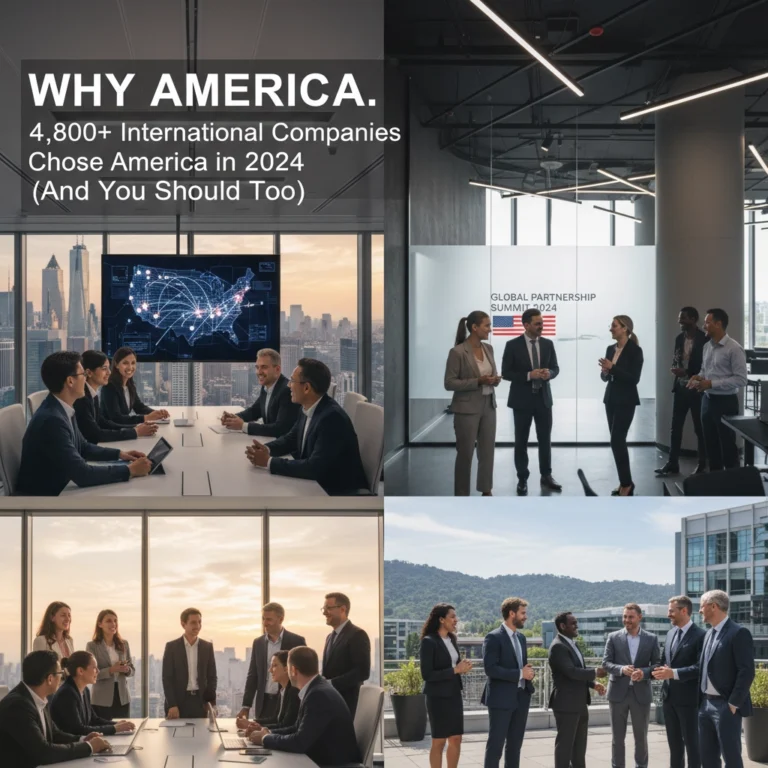U.S. Market Entry in 2025: Why Timing Matters More Than Ever (And What to Do First)
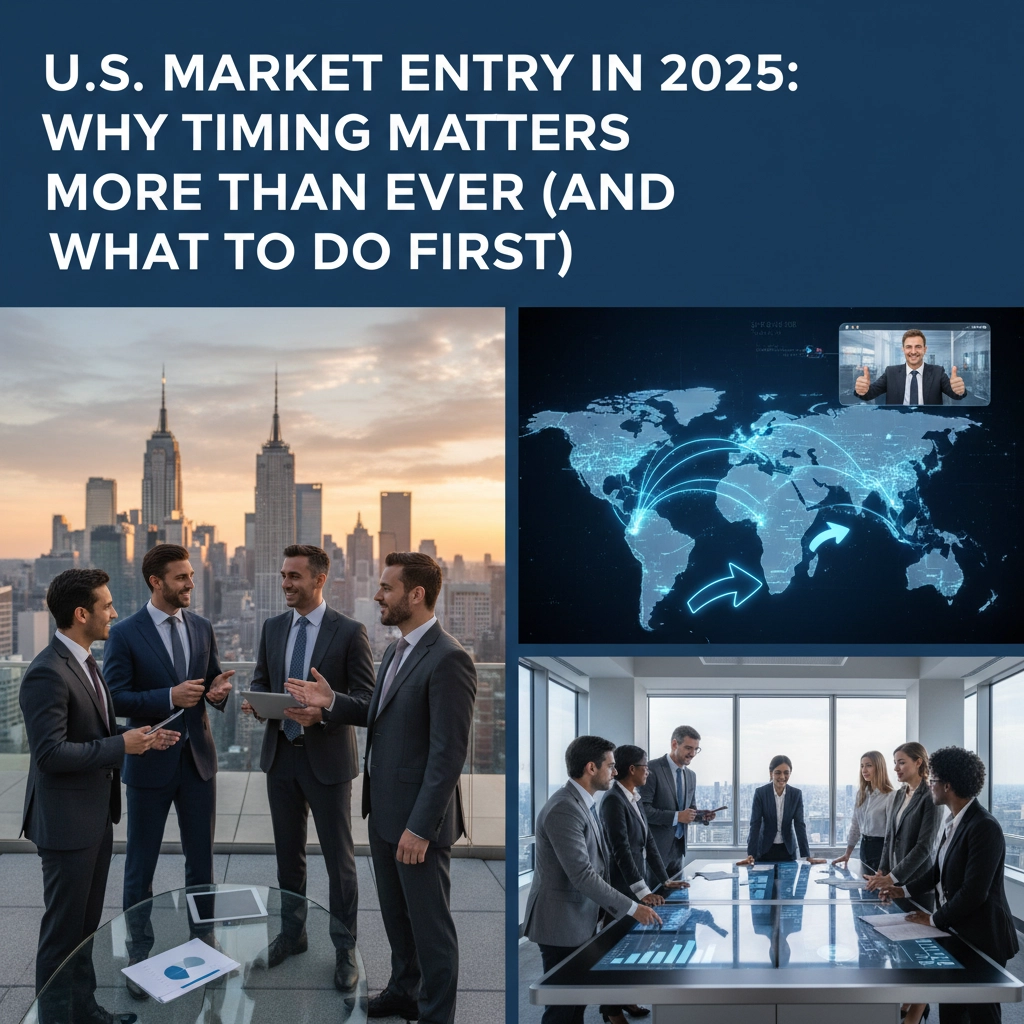
If you're running a $10M+ international company and you've been thinking about entering the U.S. market, 2025 isn't just another year: it's the year that changes everything.
The landscape has shifted dramatically. Tariffs are hitting 100% in some sectors. Government policies are creating unprecedented opportunities. States are literally competing against each other to attract your business. And here's the kicker: most of your competitors are still sitting on the sidelines, overwhelmed by the complexity.
Smart executives aren't waiting. They're moving now, while the window is wide open.
The Perfect Storm: Why 2025 Is Different
Let's cut through the noise. Three major forces have collided to create the most favorable U.S. market entry environment we've seen in decades.
Government support has exploded. SelectUSA just wrapped their 2025 Investment Summit with over 5,500 attendees: that's a 40% jump from last year. This isn't just pageantry. The federal government is actively rolling out red carpets for international companies, especially those bringing manufacturing, innovation, and jobs.
The Small Business Administration (SBA) has been completely revamped. Remember when setting up a U.S. operation took 6-8 months? Now it's happening in weeks. The SBA's streamlined processes are cutting through bureaucratic red tape like never before. They're offering up to $5 million in government-backed loans through the 7(a) program, specifically targeting international manufacturers.

States are in an all-out bidding war. All 50 states now have dedicated economic development teams creating customized incentive packages for foreign investment. Translation: you have leverage. Real leverage. The kind that can cut your entry costs by 30-50% if you play it right.
But here's what most executives miss: this opportunity window won't stay open forever. Government priorities shift. Economic conditions change. Your competitors will eventually wake up.
The Tariff Reality Check
Let's talk about the elephant in the room: tariffs. They're not going away. In fact, they're getting worse. Some sectors are already hitting 100%, and more increases are coming.
But here's what the smart money knows: tariffs don't apply to products manufactured in the U.S. Set up local operations, and those crushing import costs disappear overnight. Forever.
One of our clients was paying $2.3 million annually in tariffs. After establishing U.S. manufacturing, that number went to zero. Not reduced: eliminated. That's $2.3 million in pure profit improvement, year after year.
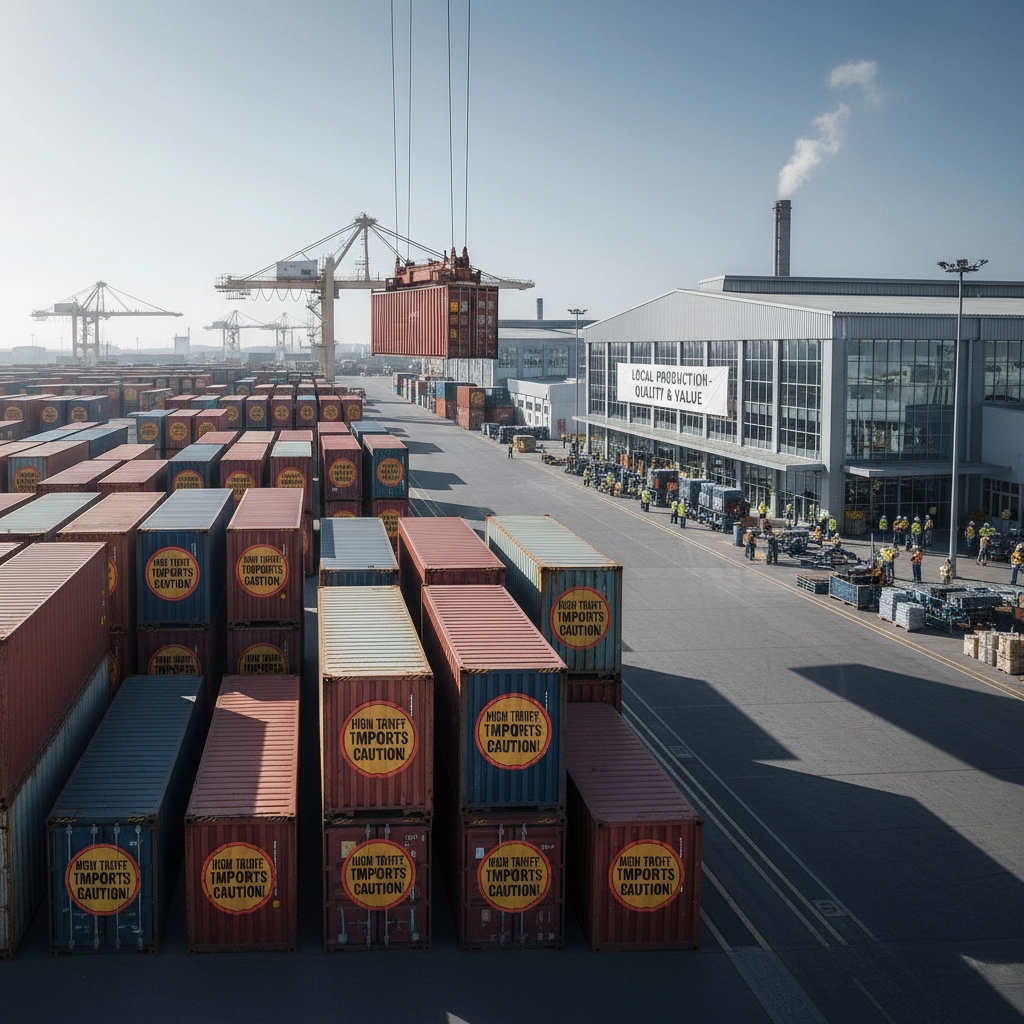
The companies waiting for tariffs to stabilize are making a costly mistake. The companies setting up U.S. operations now are turning tariffs into a competitive advantage.
Four Strategic Entry Paths (Choose Wisely)
Not all market entries are created equal. After working with hundreds of international companies, we've identified four proven pathways. Your choice determines everything: speed to market, investment requirements, and long-term success.
Direct Subsidiary Formation gives you complete control. You own the entity, make all decisions, and keep all profits. It's perfect for companies selling directly to U.S. customers who want maximum control over pricing, delivery, and customer relationships. With current SBA support, this route is faster and cheaper than ever.
Strategic Partnerships and Joint Ventures get you moving quickly without building infrastructure from scratch. This works brilliantly for niche products or when you need to meet "Buy American" preferences fast. The downside? Shared profits and potentially misaligned partners.
Greenfield Investment means building from the ground up through a wholly-owned U.S. subsidiary. Higher upfront costs, but maximum long-term positioning. Ideal for manufacturers who want to customize locally and build serious market credibility.
Acquisition delivers immediate market access by purchasing existing U.S. companies. Over 40% of new large U.S. factories now involve international firms using this approach. It's expensive but eliminates the startup phase entirely.
Your First 90 Days: The Strategic Execution Framework
Here's where most international companies go wrong: they treat the U.S. as one big market. Fatal mistake.
The U.S. isn't one market: it's 50 distinct playfields with different regulations, taxes, incentives, and competitive landscapes. Your first job is picking the right playground.

Week 1-2: Market Intelligence
Don't just research demand. Research state-specific regulations, incentive programs, and competitive landscapes. Texas operates differently than California. Florida has different rules than New York. This homework determines everything that follows.
Week 3-4: Strategic Market Selection
Choose your entry state based on regulatory favorability, available incentives, and operational requirements: not just market size. A smaller market with great incentives often delivers better ROI than a large market with hostile regulations.
Week 5-8: Structure Design
Set up your legal and operational structure for scalability from day one. Whether you're forming a subsidiary, pursuing partnerships, or planning acquisitions, build for growth. The current regulatory environment rewards companies prepared to scale quickly.
Week 9-12: Program Alignment
Align with current government programs. The Small Business Innovation Research (SBIR) program provides funding for technology development. The Made in America Manufacturing Initiative offers regulatory advantages. These aren't nice-to-haves: they're competitive necessities.
The Numbers Don't Lie
American SMEs are crushing expectations. 68% are meeting or beating performance targets despite economic uncertainty. 85% expect steady or improved performance through year-end. That creates massive gaps for international companies offering better solutions, lower costs, or innovative approaches.
Here's what this means practically: U.S. companies are growing but struggling to keep pace with demand. They need partners, suppliers, and innovative solutions. Enter now, and you're not competing: you're filling gaps.

The Regulatory Advantage
The regulatory environment has never been more favorable. The Made in America Manufacturing Initiative has delivered $100 billion in regulatory cuts. Financing access has been streamlined. Setup times have dropped 45% compared to pre-2025 timelines.
But regulations change. Political priorities shift. Economic conditions evolve. The companies entering now are locking in advantages that may not be available in 12-18 months.
What This Means for Your Business
The strategic question isn't whether to enter the U.S. market: it's how fast you can execute with sophistication. The current environment rewards speed, but only when coupled with strategic intelligence.
Companies that understand state-by-state differences, leverage government programs, and structure for rapid scaling are capturing disproportionate advantages. Companies that wait are watching opportunities disappear to competitors who moved faster.

The opportunity window created by government support, streamlined regulations, and state competition won't last forever. Your competitors will eventually figure this out. Market conditions will evolve. Political priorities will shift.
But right now, today, the conditions are perfect. The support systems are in place. The regulatory environment is favorable. The competitive landscape is open.
Ready to Move?
The companies that dominate the next decade of U.S. market growth are making their moves now. Not planning to move. Not researching moves. Actually moving.
If you're ready to stop paying tariffs, start capturing U.S. market share, and build a competitive advantage while the window is wide open, the question isn't what to do: it's how fast you can do it.
The U.S. market is waiting. The government is supporting. The states are competing. Your competitors are hesitating.
Your move.
Ready to turn this opportunity into action? Let's talk about your specific situation and build your strategic entry plan while the conditions are still perfect.


